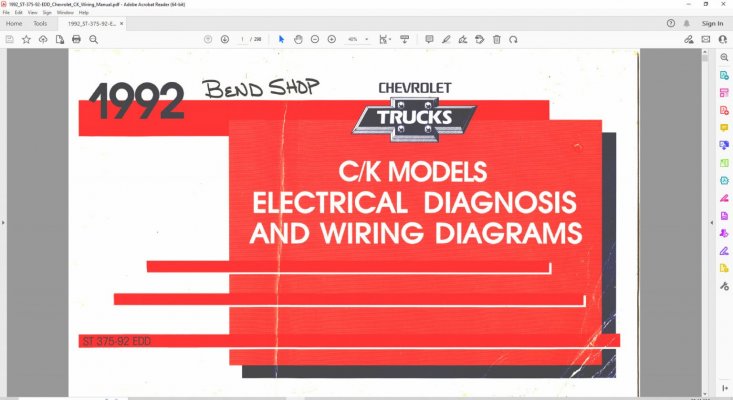Good Morning; I'm real new here and realize I ask a lot of questions but I am pretty needy in the troubleshooting department. New to me about 2 months ago a 1992 GMC Regular Cab short bed K 1500. I love the truck and intend it to be my driver. They still look as good as ever to me and I may even paint this one. I guess I could drive newer stuff but it doesn't appeal to me. I recently got a Snapon MT2500 since I have a couple other 400 series trucks and can use on all. It quickly helped me find a bad cat on my 1990 K1500 regular cab long bed daily driver. I got the Brick scanner because I get mad at myself if I resort to the parts cannon. I should add that the 92 GMC is also a 5.7. The brick helped me find a bad map sensor and temperature sensor. Once I put those in along with 195 t-stat I could get closed loop at warm idle. Codes 15-34-42-&54. I have replaced the temp sensor, map, and fuel pump relay as well as a bad fuel pump. I have not replaced the ignition module yet but have a new one in the shop. Could that account for the bit of roughness I still have? Also, I think the ecm is original. At 32 years is it safe to assume it is time to change ecm? Prom is 5841. Any suggestions on where to get ecm?
I'll be honest, I have enough hours in this that I am starting to run things together and repeat procedures. An owner, once removed from me had had the engine rebuilt. I don't think it has been on the road since. You can tell by the assembly that they had some sense and everything looks pretty well done. All the brackets are done right, some nice paint on thing, just looks like care was used. Some grounds still need to be addressed, the one on passenger side firewall broken off at other end. Will get to that. I put this in my first post at the forum but engine has comp cams hyd. roller, (specs unknown), and guides in valley for same as well as roller tip rockers. Also a Holley 502-9 tbi. Other than that stock heads etc. Factory exhaust. Cam is not wild. No significant loping at least. I have put in new plugs, ohmed out the new plug wires, adjusted valves, timed, etc. etc. Will list numbers pulled with scanner yesterday at 190 degree temp. tps-0.76, closed loop, 02-325 to600, block learn-133, Integrator-127 to 130, IAC-84, 02 crosscounts-7-20, map V.-1.88, Map Hg-13.3 These numbers at about 1100 rpm idle. Some of these numbers I understand but some are mumbo jumbo to me. By the way, I fought with this thing for a long time before doing what all the people on forum said and bought a fuel pressure tester and found major problem. PS 175# in all cylinders
Any ideas appreciated and I will pay attention to them. If I knew everything I wouldn't be throwing myself on my sword like this. Thank you all.
I'll be honest, I have enough hours in this that I am starting to run things together and repeat procedures. An owner, once removed from me had had the engine rebuilt. I don't think it has been on the road since. You can tell by the assembly that they had some sense and everything looks pretty well done. All the brackets are done right, some nice paint on thing, just looks like care was used. Some grounds still need to be addressed, the one on passenger side firewall broken off at other end. Will get to that. I put this in my first post at the forum but engine has comp cams hyd. roller, (specs unknown), and guides in valley for same as well as roller tip rockers. Also a Holley 502-9 tbi. Other than that stock heads etc. Factory exhaust. Cam is not wild. No significant loping at least. I have put in new plugs, ohmed out the new plug wires, adjusted valves, timed, etc. etc. Will list numbers pulled with scanner yesterday at 190 degree temp. tps-0.76, closed loop, 02-325 to600, block learn-133, Integrator-127 to 130, IAC-84, 02 crosscounts-7-20, map V.-1.88, Map Hg-13.3 These numbers at about 1100 rpm idle. Some of these numbers I understand but some are mumbo jumbo to me. By the way, I fought with this thing for a long time before doing what all the people on forum said and bought a fuel pressure tester and found major problem. PS 175# in all cylinders
Any ideas appreciated and I will pay attention to them. If I knew everything I wouldn't be throwing myself on my sword like this. Thank you all.


